Dynamic RNA polymerase II occupancy drives differentiation of the intestine under the direction of HNF4
- PMID: 38768033
- PMCID: PMC11264335
- DOI: 10.1016/j.celrep.2024.114242
Dynamic RNA polymerase II occupancy drives differentiation of the intestine under the direction of HNF4
Abstract
Terminal differentiation requires massive restructuring of the transcriptome. During intestinal differentiation, the expression patterns of nearly 4,000 genes are altered as cells transition from progenitor cells in crypts to differentiated cells in villi. We identify dynamic occupancy of RNA polymerase II (Pol II) to gene promoters as the primary driver of transcriptomic shifts during intestinal differentiation in vivo. Changes in enhancer-promoter looping interactions accompany dynamic Pol II occupancy and are dependent upon HNF4, a pro-differentiation transcription factor. Using genetic loss-of-function, chromatin immunoprecipitation sequencing (ChIP-seq), and immunoprecipitation (IP) mass spectrometry, we demonstrate that HNF4 collaborates with chromatin remodelers and loop-stabilizing proteins and facilitates Pol II occupancy at hundreds of genes pivotal to differentiation. We also explore alternate mechanisms that drive differentiation gene expression and find that pause-release of Pol II and post-transcriptional mRNA stability regulate smaller subsets of differentially expressed genes. These studies provide insights into the mechanisms of differentiation in renewing adult tissue.
Keywords: CP: Genomics; CP: Molecular biology; HNF4 transcription factors; Pol II ChIP-seq; RNA polymerase II; chromatin looping; crypt-villus axis; dynamic Pol II occupancy; intestinal epithelium; post-transcriptional gene regulation; promoter-proximal pausing; rapid immunoprecipitation mass spectrometry of endogenous proteins.
Copyright © 2024 The Author(s). Published by Elsevier Inc. All rights reserved.
Conflict of interest statement
Declaration of interests The authors declare no competing interests.
Figures
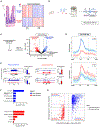
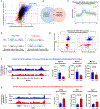
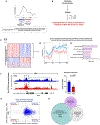
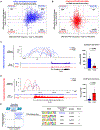
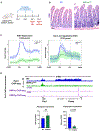
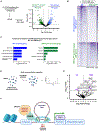
Update of
-
Dynamic RNA Polymerase II Recruitment Drives Differentiation of the Intestine under the direction of HNF4.bioRxiv [Preprint]. 2023 Nov 10:2023.11.08.566322. doi: 10.1101/2023.11.08.566322. bioRxiv. 2023. Update in: Cell Rep. 2024 Jun 25;43(6):114242. doi: 10.1016/j.celrep.2024.114242. PMID: 37986803 Free PMC article. Updated. Preprint.
Similar articles
-
Dynamic RNA Polymerase II Recruitment Drives Differentiation of the Intestine under the direction of HNF4.bioRxiv [Preprint]. 2023 Nov 10:2023.11.08.566322. doi: 10.1101/2023.11.08.566322. bioRxiv. 2023. Update in: Cell Rep. 2024 Jun 25;43(6):114242. doi: 10.1016/j.celrep.2024.114242. PMID: 37986803 Free PMC article. Updated. Preprint.
-
Three-dimensional interactions between enhancers and promoters during intestinal differentiation depend upon HNF4.Cell Rep. 2021 Jan 26;34(4):108679. doi: 10.1016/j.celrep.2020.108679. Cell Rep. 2021. PMID: 33503426 Free PMC article.
-
Disruption of cardiac Med1 inhibits RNA polymerase II promoter occupancy and promotes chromatin remodeling.Am J Physiol Heart Circ Physiol. 2019 Feb 1;316(2):H314-H325. doi: 10.1152/ajpheart.00580.2018. Epub 2018 Nov 21. Am J Physiol Heart Circ Physiol. 2019. PMID: 30461303 Free PMC article.
-
Emerging roles of transcriptional enhancers in chromatin looping and promoter-proximal pausing of RNA polymerase II.J Biol Chem. 2018 Sep 7;293(36):13786-13794. doi: 10.1074/jbc.R117.813485. Epub 2017 Nov 29. J Biol Chem. 2018. PMID: 29187597 Free PMC article. Review.
-
RNA polymerase II pausing as a context-dependent reader of the genome.Biochem Cell Biol. 2016 Feb;94(1):82-92. doi: 10.1139/bcb-2015-0045. Epub 2015 Sep 15. Biochem Cell Biol. 2016. PMID: 26555214 Free PMC article. Review.
References
MeSH terms
Substances
Grants and funding
LinkOut - more resources
Full Text Sources
Molecular Biology Databases
Miscellaneous

